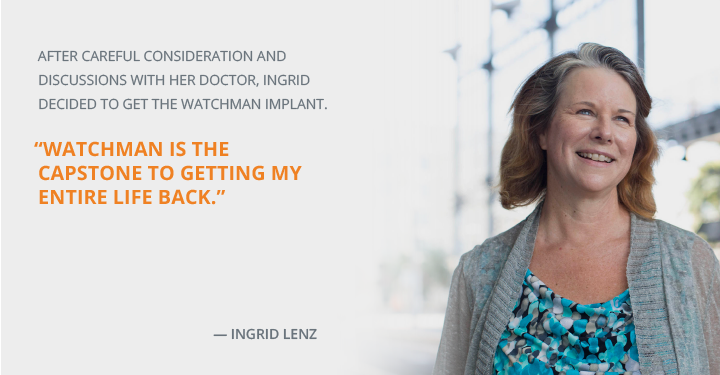ASAP-TOO Clinical Trial

We’re Particularly Interested in Women for the ASAP-TOO Trial.
We know that while men are more likely to have atrial fibrillation, women are more likely to have a stroke due to the condition.1 After a stroke women have greater disability than men.1
However, fewer women tend to participate in clinical trials overall. In fact, only about 30% of subjects in previous randomized WATCHMAN studies were women.2
Let’s Make Sure Women Are Represented This Time.

Talk with Your Doctor and Your Family.
Will I Have Time for the Trial?

If I’m Chosen to Get the Implant, Will It Be Noticeable to Others?

1 Roger VL, Go AS, Lloyd-James DM, et al. Heart disease and stroke statistics – 2012 update: A report from the American Heart Association. Circulation. 2012; 125;e2-e220.
2 Holmes JDR, et al. Left Atrial Appendage Closure as an Alternative to Warfarin for Stroke Prevention in Atrial Fibrillation: A Patient-Level Meta-Analysis. Journal of the American College of Cardiology. 2015;65:2614-2623.
PATIENT SAFETY INFORMATION
The WATCHMAN Device is a permanent implant designed to close the left atrial appendage in the heart in an effort to reduce the risk of stroke. With all medical procedures there are risks associated with the implant procedure and the use of the device. The risks include but are not limited to accidental heart puncture, air embolism, allergic reaction, anemia, anesthesia risks, arrhythmias, AV (Arteriovenous) fistula, bleeding or throat pain from the TEE (Trans Esophageal Echo) probe, blood clot or air bubbles in the lungs or other organs, bruising at the catheter insertion site, clot formation on the WATCHMAN™ Closure Device, cranial bleed, excessive bleeding, gastrointestinal bleeding, groin puncture bleed, hypotension, infection/pneumonia, pneumothorax, pulmonary edema, pulmonary vein obstruction, renal failure, stroke, thrombosis and transient ischemic attack. In rare cases death can occur. Be sure to talk with your doctor so that you thoroughly understand all of the risks and benefits associated with the implantation of the WATCHMAN Device.